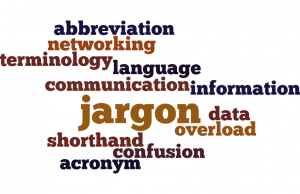If you were to ask recruiters what skills they need in each of their new good recruits the list would include: life-long learners, good communicators, able to work in diverse groups, and adaptable to new situations. If you were to ask what additional skills great recruits have they would include: perseverance, tenacious, resilient, passionate, and dedicated. The experiences of student athletes provides them the opportunity to move from good to great.
John Standeford played football and basketball for Monrovia High School, a town of 1,200 outside of Indianapolis. This 6’4’’, 168 lbs. wide-received was offered a chance to play for Purdue University by Coach Joe Tiller, going from playing for a team of 22 players to one of 105 with a much higher level of skill per player. He made the most of his experience through hard work, graduating in 2004 while holding the Big Ten’s all-time career receptions record with 266 catches. The skills he gained were put on display in his professional football career.
Drafted and signed by the Washington Redskins, he was soon traded to the Indianapolis Colts, playing for then Coach Tony Dungy. John played on the practice squad, focusing on outworking his peers. He took on his coaches mantra of ‘no excuses, no explanation’, a theme that can be associated with Nike’s Just Do It! During the 2007 season John was moved up to the active roster, a day he celebrated with dinner out with his wife. The next day Coach Dungy called him in to his office, telling him he needed to be sent back down to the practice squad due to injuries in other positions. John could have packed his bag and walked out, but he responded with an elevated effort.
With four remaining games in the 2007 regular season, John’s agent was contacted by the Detroit Lions with an offer to play for them. Coach Dungy could have responded by releasing John, but instead called him into his office. Dungy shared his thoughts of admiration he had for John, enduring when John was asked to play a role he didn’t enjoy, John chose to show up each day, putting forth his maximum effort while supporting his teammates in the process. This coach believed in integrity, faith, and hard work, then offering John a spot on the active roster for the remainder of the season. The Colts made the playoffs that year, with Peyton Manning having a career year at quarterback and John stayed on the active roster as the Indianapolis Colts went on to win the Super Bowl.
The next year, John Standeford, with a Super Bowl ring on his finger, moved on to play for the Detroit Lions. In the final game of the season, John went on to have a career high 6 receptions against all-pro defender Al Harris of the Green Bay Packers at Lambeau Field. Unfortunately, he would be another name on the wall in the NFL Hall of Fame, this time being a member of a team that went winless on the season.
John Standeford was a small town boy who was carried to success in his career through his perseverance, tenacity, resilience, passion, and dedication. Today’s recruiters are looking for those with the determination to succeed, who are willing to show up and persevere whether they are on a team of 22 or 105. Recruiters should not overlook student-athletes as they fill their rosters to build their success-oriented corporate teams.
